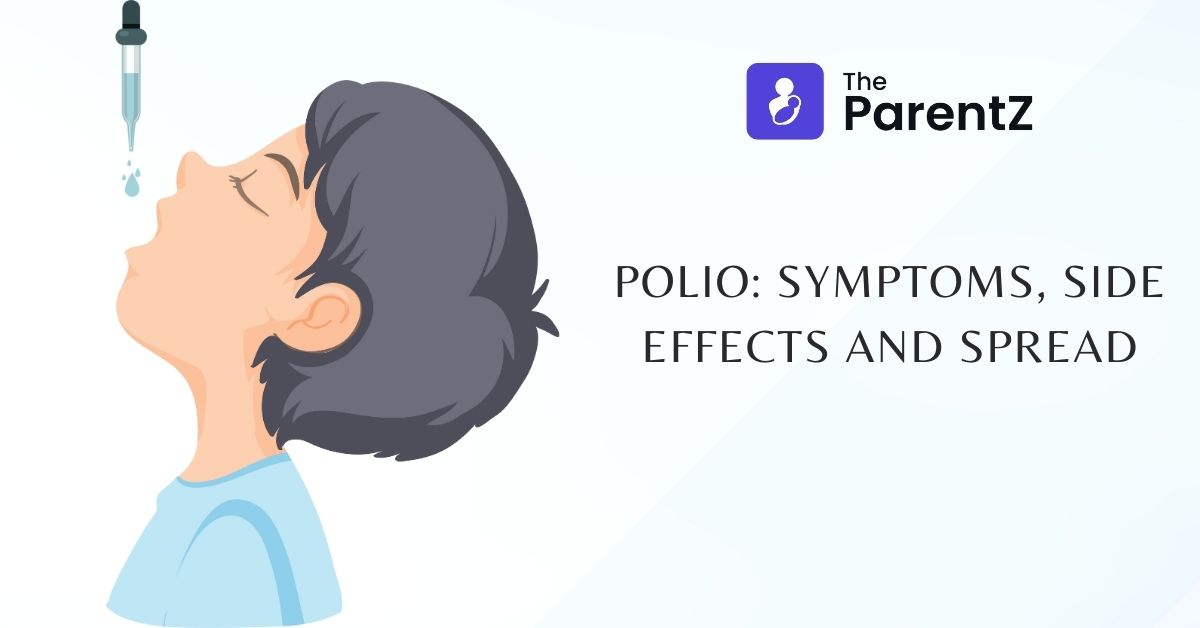When to give a vaccine dose?
Polio vaccine is present in two forms, an oral form and an injectable form. Both forms of vaccine are used worldwide with a gradual shift towards the injectable form. According to the National Immunization Schedule in India, OPV or oral polio vaccine is first given within 24 hours of birth. It is followed by three doses at 6, 10 and 14 weeks. A booster dose is also given between 16-24 weeks. For the fIPV or fractionated injectable polio vaccine, two doses are given at 6 and 14 weeks with no booster dose.
Why should the vaccine be given?
Polio infection was extremely common in developing countries before the polio vaccine was introduced in the immunisation schedule. Even though the infection is not as widespread now, polio virus is still present in the environment and can cause serious infection if your child is not immunised. Polio vaccination protects your child against polio and breaks the transmission cycle. Widespread vaccination of polio can make it possible to completely eradicate the disease from our country.
What are the side effects of the vaccine?
The side effects following polio vaccination are extremely rare but the ones which may develop are:
- OPV is free from usual side effects of vaccination. Very rarely, the viral agent in the vaccine may mutate and cause acute flaccid paralysis. The child develops paralysis and the tone of the muscles in the body decreases.
- IPV may lead to some local reaction. This includes pain, swelling and redness in the area where the vaccine was injected. This is not a cause for concern and it will resolve spontaneously over the next few days.
What is polio?
Polio is an acute infection caused by the wild poliovirus types 1, 2 and 3. It is primarily an infection of the gastrointestinal tract of the body but can also affect the central nervous system. India has been declared polio free by the WHO in 2014 as a result of the widespread vaccination program for polio.
What are symptoms of polio?
A child who develops polio may show a wide range of symptoms depending on the type of disease and immune status of the child. Mild disease is more common as compared to the severe forms. The symptoms of a polio infection include:
- Child develops diarrhoea which resolves on its own in mild polio infection.
- Child develops fever, headache, nausea, vomiting and abdominal pain.
- Children may develop neck pain and stiffness which persists for about 10 days if the viral infection spreads to the nervous system.
- In rare cases, polio infection may lead to paralysis of the child. Paralysis and weakness of the limb muscles develops initially.
- Paralysis and weakness of muscles lead to facial asymmetry, difficulty swallowing and weakness of voice.
Is polio a serious ailment?
Polio is an extremely serious ailment with no specific treatment plan available. Polio was a leading cause of death and disability in children before the development of the polio vaccine. Polio infection can lead to development of paralysis which persists life long. In severe cases, it can also lead to death.
How does polio spread?
Polio can spread via two routes – feco oral and droplet infection. In areas with poor hygiene, water and food articles may be contaminated by waste material of an infected person. If consumed, it will directly introduce the virus in the alimentary tract of the child. In acute infection, droplet infection is also possible on close contact with an infected individual.









Be the first one to comment on this story.